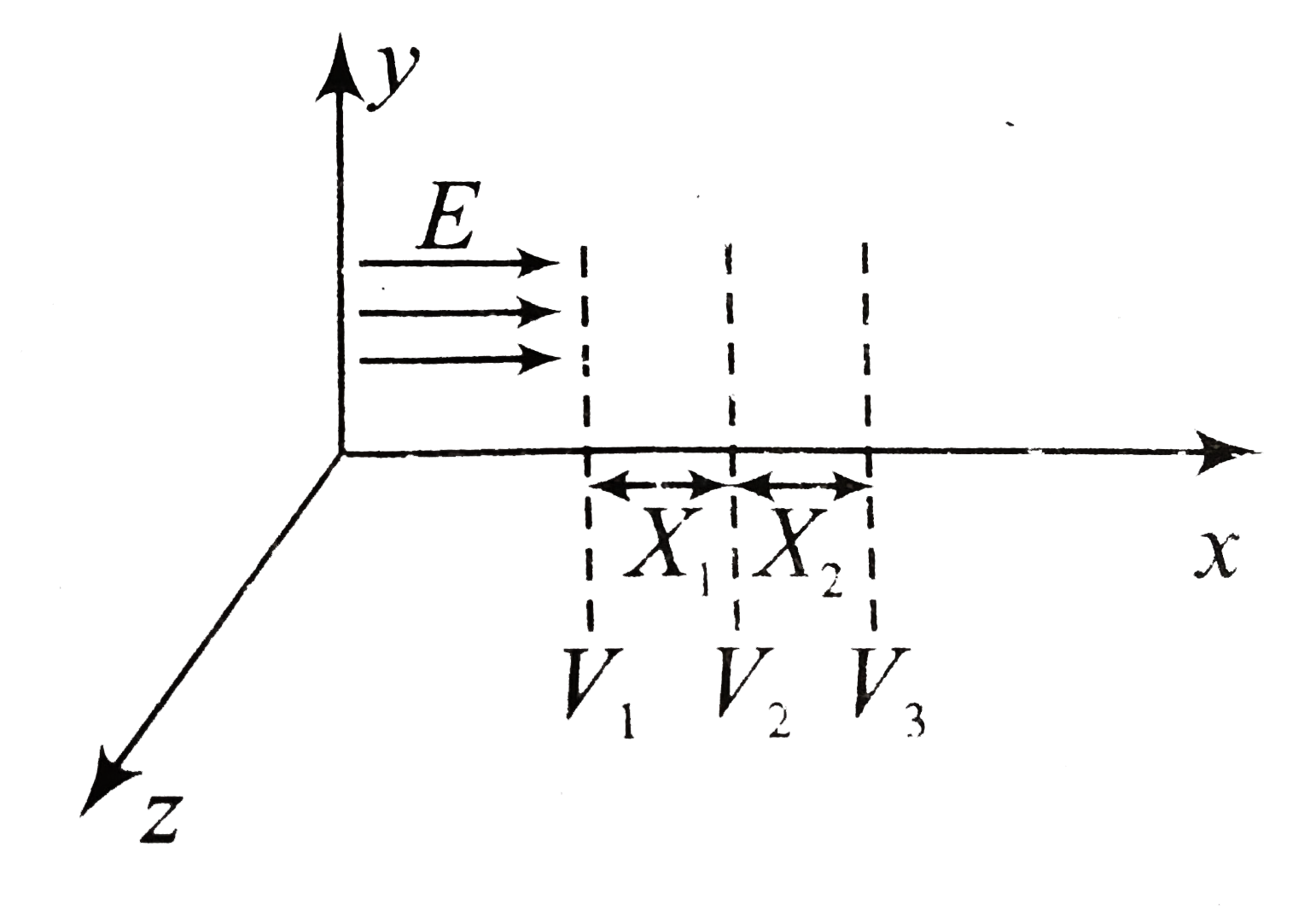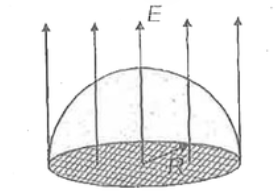A uniform electric field E = iE exists as shown in the figure given below. Draw one equipotential surface.

As, uniform electric field, i.e. E=ˆiE,
So, field is along X-axis, therefore equipotential surfaces are plane, normal to the X-axis. i.e. planes parallel to the yz-plane as shown in the figure giverfbelow.

Similar Questions
In the uniform electric field shown in figure, find

View SolutionThere exists a non!-uniform electric field along x-axis as shown in the figure below. The field increases at a uniform rate along +ve x-axis. A dipole is placed inside the field as shown. Which one of the following is correct for the dipole?

View Solution
Knowledge Check
In an electric field shown in figure, three equipotential figure, three equipotential surfaces are shown. If function are shown. If function of electric field is E=2x2Vm−1, and given that V1−V2=V2−V3, then we have
 Ax1=x2Bx1>x2Cx2>x1Ddata insufficient
Ax1=x2Bx1>x2Cx2>x1Ddata insufficientA cone lies in a uniform electric field E as shown in figure. The electric flux entering the cone is
 AEπR2BERhCEhR2DEh2
AEπR2BERhCEhR2DEh2The electric field lines coming out of an equipotential surface are
Aperpendicular to the surfaceBparallel to the surfaceCin all directionsDzero
In an electric field shown in figure, three equipotential figure, three equipotential surfaces are shown. If function are shown. If function of electric field is E=2x2Vm−1, and given that V1−V2=V2−V3, then we have

View SolutionWhat is angle between electric field and equipotential surface?
View SolutionWhat is angle between electric field and equipotential surface?
View SolutionA hemispherical surface of radius R is kept in a uniform electric field E as shown in figure. The flux through the curved surface is

View Solution(a) Draw the equipotential surfaces corresponding to a uniform electric field in the z-direction.
(b) Derive an expression for the electric potential at any point along the axial line of an electric dipole
View Solution
